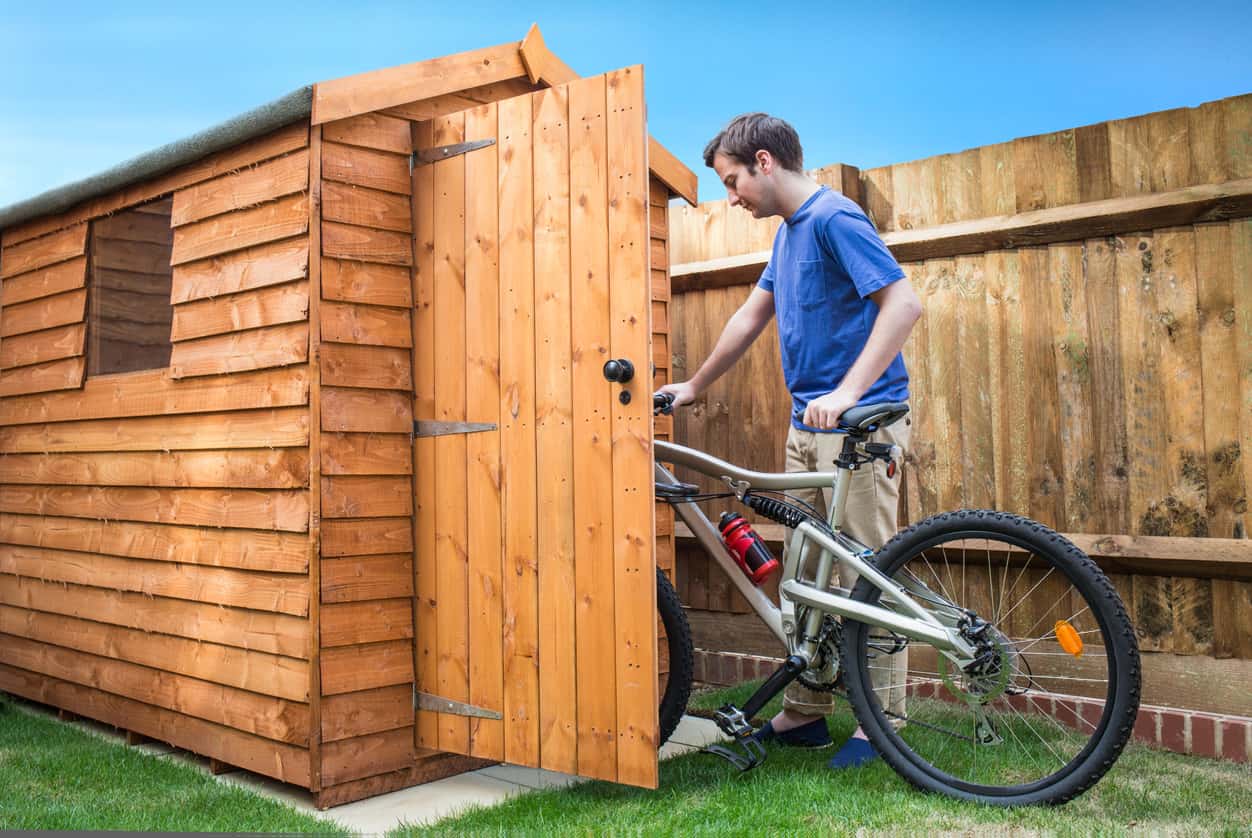It’s easy to start your garden with good intentions; a weed-free lawn with trimmed edges, neat flower beds and flower pots, and an array of tools to help you keep everything in check. But life happens, flowers die, pots crack, shrubs grow wild, weeds creep in, tools rust, and somehow there are more things on the lawn than lawn itself, and outdoor detritus is piled in every available space.
It’s all got to go; either into storage, to a charity shop, on eBay, or discarded with the rest of the rubbish.
Storage
You have two options:
- Self-storage units: Great for seasonal items, like patio umbrellas and other outdoor furniture, and kids’ sports equipment, like cricket sets
- Garden storage: Great for items you use often and which need to be protected from the elements
You can get creative with garden storage, especially if you have a small garden. Sheds come in all sorts of sizes. If you have a narrow garden you can get a narrow shed; something big enough for your lawn mower, a folding ladder, and some power tools.
Add some shelves for your tool box and small compartmentalised stackable drawers for your nails, screws, cable ties, drawing pins, nuts, and bolts, etc. Place poisons (weed killers and insecticides) on shelves too. Make sure they’re clearly labelled and securely stored so there will be no accidental leakage and they won’t fall down.
Put hooks on the walls to hang garden tools, like your spade, rake, shears and pruning tools, and saws.
You can also get storage benches. They’re solid, (mostly) weather-proof, and are ideal for kids’ toys, patio furniture cushions, picnic baskets, and other outdoor activity-related things. Obviously, you can sit on them and you can use them as makeshift outdoor tables.
You can put your garden fence to use. Add shelves for things that can stay outside, like small pot plants (which you have decorated) and other garden knick-knacks (decorative frogs, little gnomes, etc.). Add hooks and you can also hang some garden tools; just make sure they are either treated for all weather or the hooks are in a sheltered part of the garden.
What stays and what goes
You need to start off storing your items on a good foot. Take a good hard look at everything that’s lying around and make four piles:
- Store: You regularly use it (store at home) or use it seasonally (use self-storage)
- Reuse: You can repurpose it; for example, paint an old tyre and use it as a pseudo pot plant
- Charity/eBay: Still in good enough condition for others to use
- Skip: Broken beyond repair or too old to be of any use to anybody. If anything in this pile can be recycled, do so.
A note on old paint: Many of us have paint tins of varying sizes with varying amounts of paint left in them. While it’s a good idea to keep some paint so you can touch up when necessary (especially if it’s a certain colour), it’s not a good idea to keep paint indefinitely. Don’t put it in storage, it’s one of the items self-storage providers don’t allow as it is toxic and flammable. This means you shouldn’t just toss it in the skip with the rest of the garbage you’ve cleared either. Find out if there is a paint recycling centre near you and if not, contact your nearest hazardous waste disposal service for advice.
Be brutal.
If you forgot you had it, you haven’t used it in years, or you no longer need it (for example, pond cleaning equipment when you no longer have a pond), you think you’ll get around to repairing it, it’s broken but you’re still unreasonably attached to it, or you hate it but it was a gift from someone and you feel guilty when you think about getting rid of it, gird your loins and say goodbye.
Revive your lawn.
The state of your lawn doesn’t qualify as clutter but a dead lawn looks awful and brings down the rest of the garden. There’s a difference between a lawn reflecting seasonal changes that needs some gentle care to keep it alive and a lawn that is dead dead dead. You can try coax a dead lawn back to life with compost, fertiliser, grass seeds, watering, and patience. It’s a rather time and labour-intensive process and there is no guarantee your hard work will pay off. Your other options include:
- Hiring a garden service to lay new lawn and take care of the new lawn
- Hiring a garden service to lay new lawn and maintain it yourself
- Buying new lawn and lay it and maintain it yourself
- Going with a lawn alternative – artificial grass – and don’t worry about maintenance again
The real trick to removing the clutter from your garden is to keep it clutter-free. Use the storage you have created. Put away tools and toys and cushions in the shed, storage bench, and garden shelves when you are done with them. Use the self-storage unit you’re renting for large items and items that you seldom use.
A little effort goes a long way.
